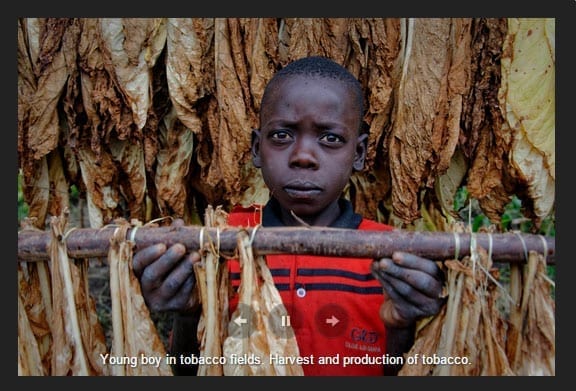Some 168 million children remain trapped in child labor—11 percent of the world’s child population—even as 200 million youth in 2012 were working but earning less than $2 per day, according to an International Labor Organization (ILO) report released this week.
“Both child labor and the youth decent work deficit are symptomatic of the general lack of sustained, inclusive and sustainable economic growth in the global economy and in developing economies in particular,” according to the report.
Released in advance of World Day Against Child Labor June 12, the report focuses on the twin challenges of eliminating child labor and ensuring decent work for youth. “Achieving decent work for all will not be possible without eliminating child labor and erasing the decent work deficit youth face,” the report notes.
“World Report on Child Labor 2015: Paving the Way to Decent Work for Young People,” finds that at its core, child labor is about a lack of good jobs for adults—decent work with good wages and social protections that enables parents to support their families.
The report describes a self-perpetuating cycle of low-wage, low-skilled work opportunities that in turn provides no incentive for parents to keep their children in school because they have fewer reasons to delay their children’s entry into work and to incur the costs associated with their children’s schooling. Conversely, increased demand for skill translates into increased investment in education, the report finds.
The report also examines the worst forms of child labor, in which 85 million children under age 18 toil in hazardous work that directly harms their health, safety or moral development. Girls are especially vulnerable to worst forms of child labor, such as commercial sexual exploitation, and to hidden forms of child labor, such as domestic work outside their own homes.
Some 46.5 million adolescents age 15–17 years labor in hazardous work—40 percent of all employed 15–17 year-olds, according to the report.
Among them are child laborers in Ghana’s gold mines who pull the gold ore out of shafts, carry and crush loads of ore and process it with toxic mercury, according to a Human Rights Watch report also released this week.
“Precious Metal, Cheap Labor: Child Labor and Corporate Responsibility in Ghana’s Artisanal Gold Mines,” documents the use of child labor in Ghana’s unlicensed, mines, where most mining takes place. It is estimated that thousands of children work in hazardous conditions in violation of Ghanaian and international law.
Many local gold traders have done little to determine whether the gold they buy is produced with child labor, and regularly bought at unlicensed mining sites, where child labor often occurs, the report finds. The Ghanaian government-owned gold trading company, the Precious Metals Marketing Company, has no procedures to determine whether children have been involved in producing the gold it purchases. It provides trading licenses to about 700 buying agents and trading companies without obliging traders to use any human rights criteria, including regarding child labor, when purchasing gold.

